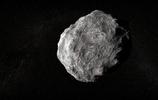The Economics Behind Mining Asteroids for Metals

What’s the Latest Development?
Were it not for the list of extremely successful businessmen behind the recent announcement to mine asteroids for precious metals, the idea might be a laughing stock. But when Google executives and private space pioneers team up with James Cameron and the heir to Ross Perot’s fortune, you really have to take the news seriously. Peter Diamandis, creator of the XPrize Foundation and co-founder the company charged with mining the asteroids, said: “A 30 meter asteroid can hold as much as $25 billion to $50 billion worth of platinum at today’s prices.”
What’s the Big Idea?
A look at the economics of the venture through the eyes of a financial investor demonstrates the massive technological advancements that must occur for the project to turn a profit. For a cost of $200 million, the Japanese Hayabusa Probe returned less than a gram of dust from the near-Earth asteroid 25143 Itokawa. Quoting research from two Barclays Capital commodities analysts: “Using Hayabusa as a base to calculate break-even prices, we estimate that the cost of gold needs to rise to about $6.2-billion per ounce troy to make asteroid mining economical.”
Photo credit: Shutterstock.com





